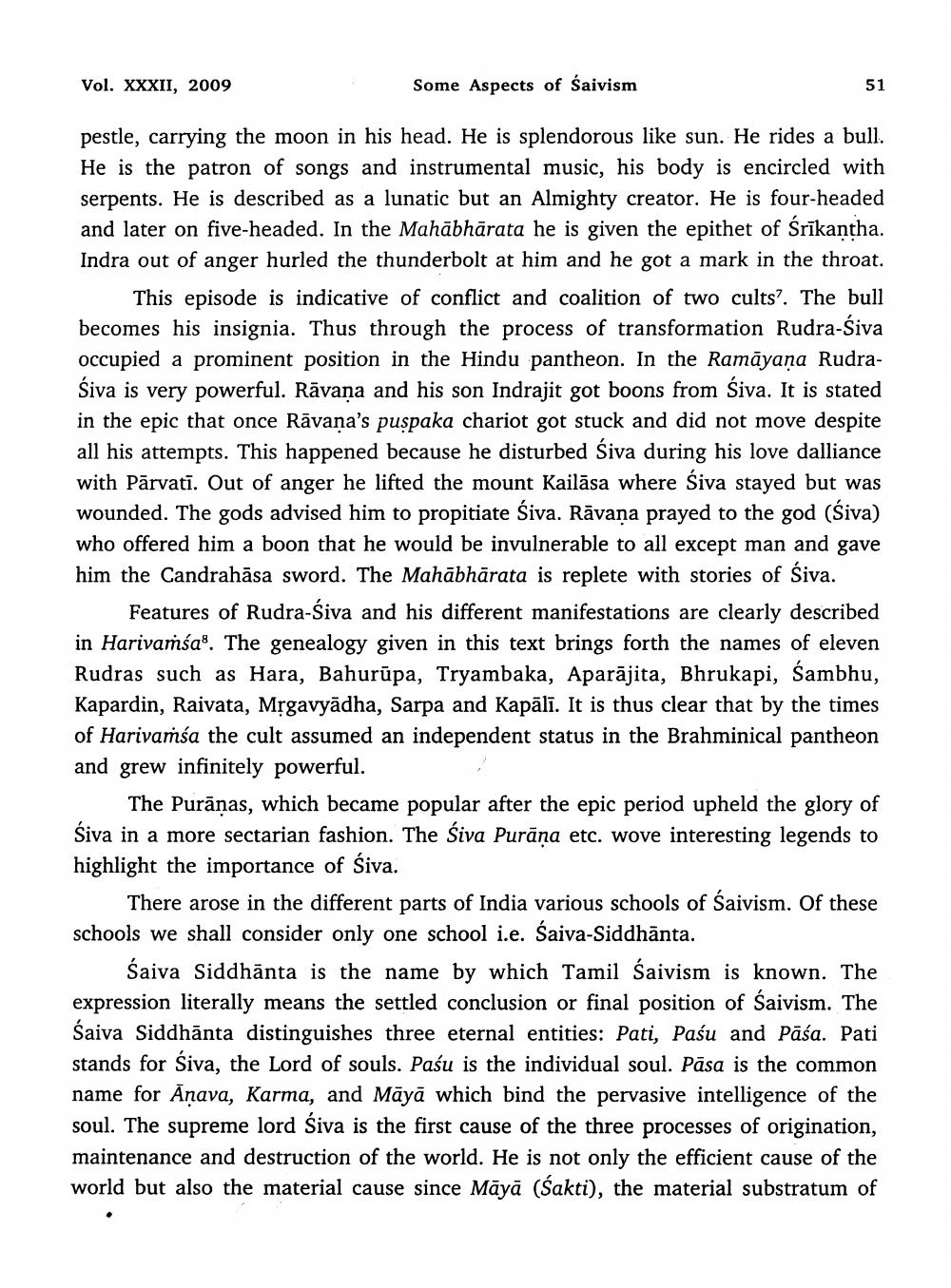________________
Vol. XXXII, 2009
Some Aspects of saivism
51
pestle, carrying the moon in his head. He is splendorous like sun. He rides a bull. He is the patron of songs and instrumental music, his body is encircled with serpents. He is described as a lunatic but an Almighty creator. He is four-headed and later on five-headed. In the Mahābhārata he is given the epithet of Śrīkantha. Indra out of anger hurled the thunderbolt at him and he got a mark in the throat.
This episode is indicative of conflict and coalition of two cults?. The bull becomes his insignia. Thus through the process of transformation Rudra-Siva occupied a prominent position in the Hindu pantheon. In the Ramāyaṇa RudraSiva is very powerful. Rāvana and his son Indrajit got boons from Siva. It is stated in the epic that once Rāvana's puspaka chariot got stuck and did not move despite all his attempts. This happened because he disturbed Śiva during his love dalliance with Pārvatī. Out of anger he lifted the mount Kailāsa where Siva stayed but was wounded. The gods advised him to propitiate Siva. Rāvana prayed to the god (Śiva) who offered him a boon that he would be invulnerable to all except man and gave him the Candrahāsa sword. The Mahābhārata is replete with stories of Śiva.
Features of Rudra-Siva and his different manifestations are clearly described in Harivamsa8. The genealogy given in this text brings forth the names of eleven Rudras such as Hara, Bahurūpa, Tryambaka, Aparājita, Bhrukapi, Sambhu, Kapardin, Raivata, Mrgavyādha, Sarpa and Kapālī. It is thus clear that by the times of Harivamsa the cult assumed an independent status in the Brahminical pantheon and grew infinitely powerful.
The Purānas, which became popular after the epic period upheld the glory of Siva in a more sectarian fashion. The Siva Purāna etc. wove interesting legends to highlight the importance of Śiva.
There arose in the different parts of India various schools of Saivism. Of these schools we shall consider only one school i.e. saiva-Siddhānta.
Saiva Siddhānta is the name by which Tamil saivism is known. The expression literally means the settled conclusion or final position of Saivism. The Saiva Siddhānta distinguishes three eternal entities: Pati, Paśu and Pāśa. Pati stands for Siva, the Lord of souls. Pasu is the individual soul. Pāsa is the common name for Anava, Karma, and Māyā which bind the pervasive intelligence of the soul. The supreme lord Siva is the first cause of the three processes of origination, maintenance and destruction of the world. He is not only the efficient cause of the world but also the material cause since Māyā (Śakti), the material substratum of




